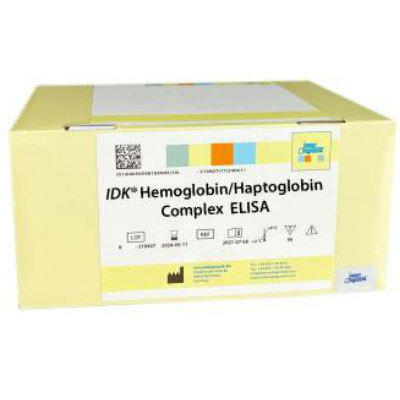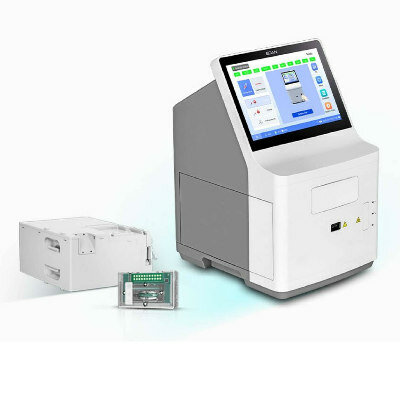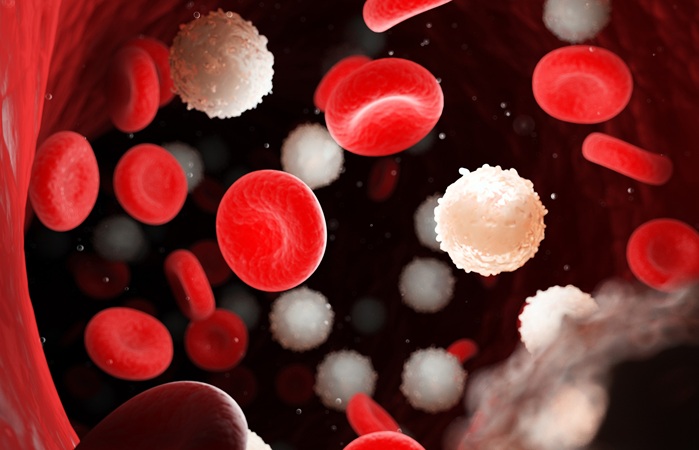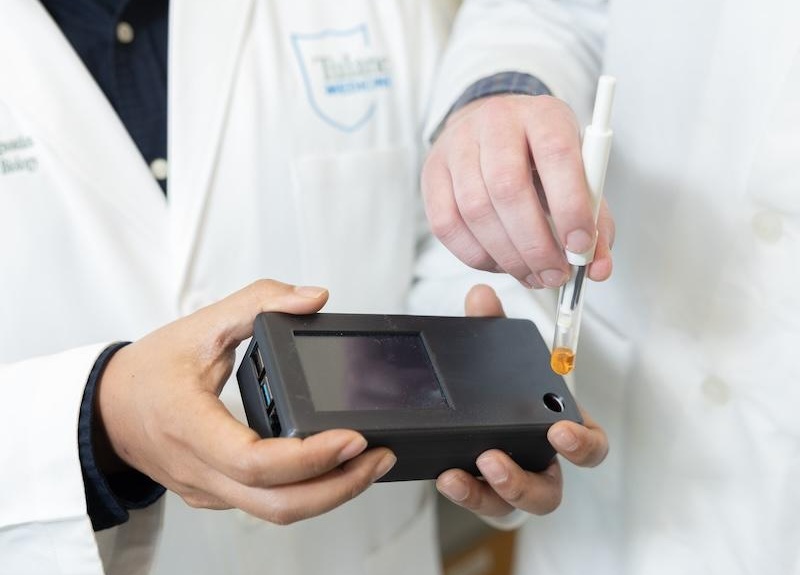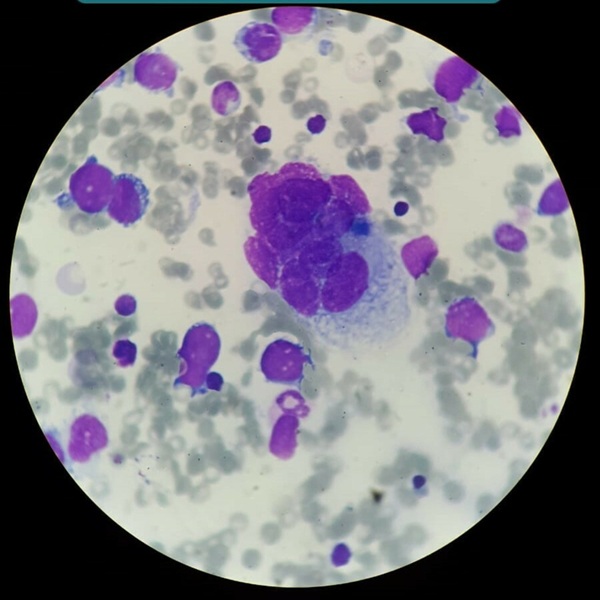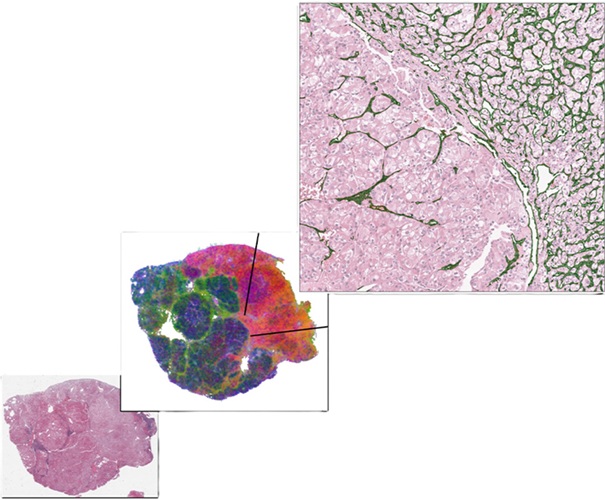Rapid POC STI Test Detects Chlamydia and Gonorrhea Simultaneously in Two Minutes
|
By LabMedica International staff writers Posted on 30 Oct 2023 |

In 2020, the World Health Organization reported that over half of the estimated 374 million new sexually transmitted infections were either chlamydia or gonorrhea. These diseases often show no symptoms and can co-exist, posing a significant health risk. If left untreated, they can cause irreversible damage to a woman's reproductive system. Gonorrhea, increasingly resistant to antibiotics, can even be fatal if it spreads to the blood and joints. Despite the high incidence, there are currently no quick tests for either condition. However, this might soon change with the introduction of a lateral flow biosensor that can detect nucleic acids present in chlamydia or gonorrhea from cervical and vaginal swabs in just two minutes.
Existing point-of-care tests for these infections often don't work as well as they should and are not ideal for routine screenings during regular medical visits. Currently, standard tests rely on molecular techniques to detect bacterial nucleic acids but can be costly and time-consuming. Researchers at The Pennsylvania State University (University Park, PA, USA) have announced the development of the first rapid tests for gonorrhea and chlamydia. The tests use a lateral flow biosensor, similar to those in at-home COVID-19 tests, to identify nucleic acids from chlamydia or gonorrhea in swab samples within minutes.
Just like a COVID test, the sample does not need pre-processing before being placed in a liquid that allows the contents to flow laterally from a reservoir over a sensing strip. This strip has specially designed fragments of nucleic acids, known as single-stranded oligonucleotides (ssDNAs), that have a strong affinity for specific genes found in various strains of chlamydia and gonorrhea. These ssDNAs change color when they bind to target nucleic acids, indicating a positive result. This technology was validated using an absorbance-based assay; each ssDNA probe was linked to a gold nanoparticle which has unique optical properties and changes color when the probe binds to its target. The gold nanoparticle also increases in diameter and aggregates with other probe/nanoparticle sensor complexes to strengthen the signal and deepen the color change.
In clinical tests involving 60 anonymous samples, the rapid tests correctly identified chlamydia and gonorrhea every time, with no false negatives. The specificity was slightly lower, at over 97%, meaning there were a few false positives. However, these results are as good as, or better than, current molecular tests like polymerase chain reaction or nucleic acid amplification tests. The researchers also mentioned that the test's design can be tweaked by altering the synthetic DNA sequences in the ssDNAs to identify other pathogens.
“The development of a point-of-care diagnostic method based on nucleic acid detection with high sensitivity, specificity and usability is urgently needed,” said Dipanjan Pan, a researcher at Penn State who led the study. “Moreover, since co-infections occur frequently — up to 50% of the time — and have similar symptoms, simultaneous identification and detection of both pathogens is more efficient and cost-effective. To combat the current epidemic of these STIs, it is vital to develop a rapid point-of-care diagnostic assay that can detect chlamydia and gonorrhea simultaneously.”
Related Links:
Penn State
Latest Molecular Diagnostics News
- First-in-Class Diagnostic Blood Test Detects Axial Spondyloarthritis
- New Molecular Label to Help Develop Simpler and Faster Tuberculosis Tests
- Biomarker Discovery Paves Way for Blood Tests to Detect and Treat Osteoarthritis
- Liquid Biopsy Assay Detects Recurrence in CRC Patients Prior to Imaging
- Ultra Fast Synovial Fluid Test Diagnoses Osteoarthritis and Rheumatoid Arthritis In 10 Minutes
- Genetic-Based Tool Predicts Survival Outcomes of Pancreatic Cancer Patients
- Urine Test Diagnoses Early-Stage Prostate Cancer
- New Genetic Tool Analyzes Umbilical Cord Blood to Predict Future Disease
- Spinal Fluid Biomarker for Parkinson’s Disease Offers Early and Accurate Diagnosis
- Revolutionary Blood Test Detects 30 Different Types of Cancers with 98% Accuracy
- Simple Blood Test Better Predicts Heart Disease Risk
- New Blood Test Detects 12 Common Cancers Before Symptoms Appear
- Blood Test Could Predict Relapse of Autoimmune Blood Vessel Disease
- First-of-its-Kind Blood Test Detects Trauma-Related Diseases
- Key Gene Identified in Common Heart Disease Unlocks Life-Saving Diagnostic Potential
- Cheap Cell-Free DNA Based Test Accurately Predicts Preterm Birth
Channels
Clinical Chemistry
view channel
AI-Powered Blood Test Accurately Detects Ovarian Cancer
Ovarian cancer ranks as the fifth leading cause of cancer-related deaths in women, largely due to late-stage diagnoses. Although over 90% of women exhibit symptoms in Stage I, only 20% are diagnosed in... Read more
Automated Decentralized cfDNA NGS Assay Identifies Alterations in Advanced Solid Tumors
Current circulating cell-free DNA (cfDNA) assays are typically centralized, requiring specialized handling and transportation of samples. Introducing a flexible, decentralized sequencing system at the... Read more
Mass Spectrometry Detects Bacteria Without Time-Consuming Isolation and Multiplication
Speed and accuracy are essential when diagnosing diseases. Traditionally, diagnosing bacterial infections involves the labor-intensive process of isolating pathogens and cultivating bacterial cultures,... Read more
First Comprehensive Syphilis Test to Definitively Diagnose Active Infection In 10 Minutes
In the United States, syphilis cases have surged by nearly 80% from 2018 to 2023, with 209,253 cases recorded in the most recent year of data. Syphilis, which can be transmitted sexually or from mother... Read moreHematology
view channel
First Point-of-Care Heparin Monitoring Test Provides Results in Under 15 Minutes
Heparin dosing requires careful management to avoid both bleeding and clotting complications. In high-risk situations like extracorporeal membrane oxygenation (ECMO), mortality rates can reach about 50%,... Read more
New Scoring System Predicts Risk of Developing Cancer from Common Blood Disorder
Clonal cytopenia of undetermined significance (CCUS) is a blood disorder commonly found in older adults, characterized by mutations in blood cells and a low blood count, but without any obvious cause or... Read moreImmunology
view channel
Stem Cell Test Predicts Treatment Outcome for Patients with Platinum-Resistant Ovarian Cancer
Epithelial ovarian cancer frequently responds to chemotherapy initially, but eventually, the tumor develops resistance to the therapy, leading to regrowth. This resistance is partially due to the activation... Read more
Machine Learning-Enabled Blood Test Predicts Immunotherapy Response in Lymphoma Patients
Chimeric antigen receptor (CAR) T-cell therapy has emerged as one of the most promising recent developments in the treatment of blood cancers. However, over half of non-Hodgkin lymphoma (NHL) patients... Read moreMicrobiology
view channel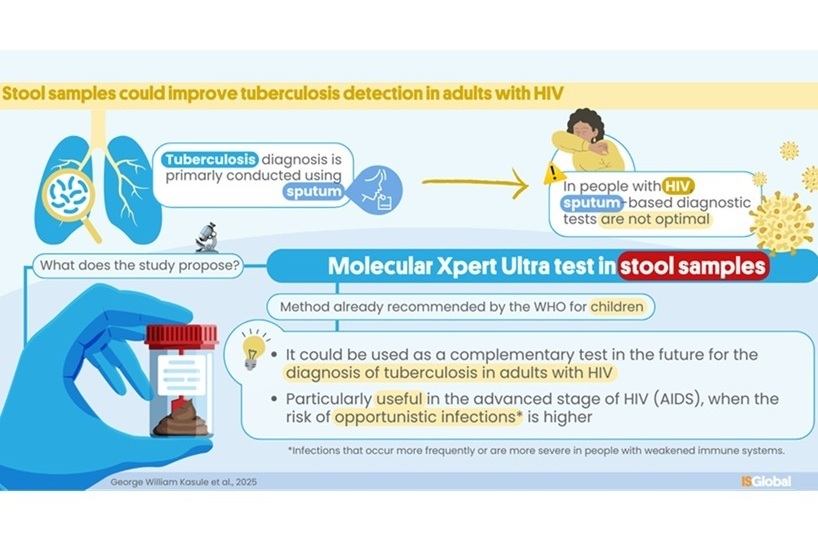
Molecular Stool Test Shows Potential for Diagnosing TB in Adults with HIV
Tuberculosis (TB), caused by the bacterium Mycobacterium tuberculosis, led to 1.25 million deaths in 2023, with 13% of those occurring in people living with HIV. The current primary diagnostic method for... Read more
New Test Diagnoses Bacterial Meningitis Quickly and Accurately
Bacterial meningitis is a potentially fatal condition, with one in six patients dying and half of the survivors experiencing lasting symptoms. Therefore, rapid diagnosis and treatment are critical.... Read morePathology
view channel
Groundbreaking Chest Pain Triage Algorithm to Transform Cardiac Care
Cardiovascular disease is responsible for a third of all deaths worldwide, and chest pain is the second most common reason for emergency department (ED) visits. With EDs often being some of the busiest... Read more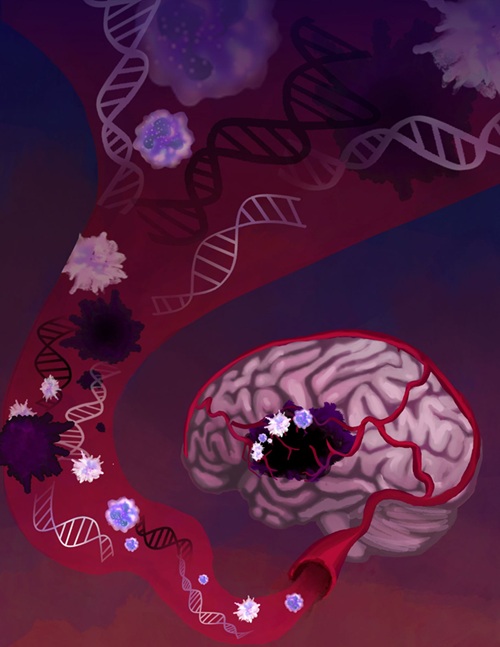
AI-Based Liquid Biopsy Approach to Revolutionize Brain Cancer Detection
Detecting brain cancers remains extremely challenging, with many patients only receiving a diagnosis at later stages after symptoms like headaches, seizures, or cognitive issues appear. Late-stage diagnoses... Read moreTechnology
view channel
Advanced Predictive Algorithms Identify Patients Having Undiagnosed Cancer
Two newly developed advanced predictive algorithms leverage a person’s health conditions and basic blood test results to accurately predict the likelihood of having an undiagnosed cancer, including ch... Read more
Light Signature Algorithm to Enable Faster and More Precise Medical Diagnoses
Every material or molecule interacts with light in a unique way, creating a distinct pattern, much like a fingerprint. Optical spectroscopy, which involves shining a laser on a material and observing how... Read more
Disposable Microchip Technology Could Selectively Detect HIV in Whole Blood Samples
As of the end of 2023, approximately 40 million people globally were living with HIV, and around 630,000 individuals died from AIDS-related illnesses that same year. Despite a substantial decline in deaths... Read more
Pain-On-A-Chip Microfluidic Device Determines Types of Chronic Pain from Blood Samples
Chronic pain is a widespread condition that remains difficult to manage, and existing clinical methods for its treatment rely largely on self-reporting, which can be subjective and especially problematic... Read moreIndustry
view channel
Cepheid and Oxford Nanopore Technologies Partner on Advancing Automated Sequencing-Based Solutions
Cepheid (Sunnyvale, CA, USA), a leading molecular diagnostics company, and Oxford Nanopore Technologies (Oxford, UK), the company behind a new generation of sequencing-based molecular analysis technologies,... Read more
Grifols and Tecan’s IBL Collaborate on Advanced Biomarker Panels
Grifols (Barcelona, Spain), one of the world’s leading producers of plasma-derived medicines and innovative diagnostic solutions, is expanding its offer in clinical diagnostics through a strategic partnership... Read more







